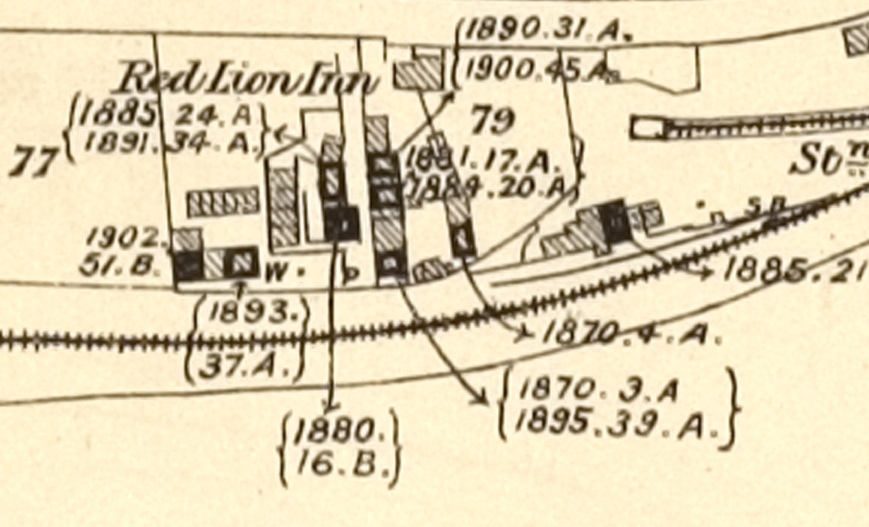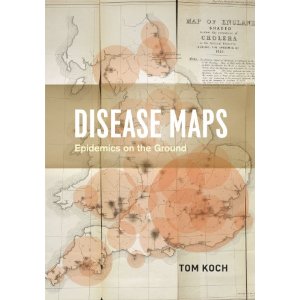By Tom Koch (Guest Contributor)

In this detail from a 1903 map of cancer in a village D’Arcy Powell investigated possible local environmental causes of cancer incidence in his British medical practice.
Something wonderful happened in the 1500’s when we learned to see in a way that permitted knowledge to be accumulated and categorized in a new way. It began with an anatomical atlas and an atlas of the world, the two together presaging a way of knowing that continues today. Within a hundred years the map became the medium in which symptoms were collected into databases whose cases became a single mapped event: an outbreak of plague, for example, whose sources could be interrogated. By the end of the next century the map became a principal medium in which theories of diseases like yellow fever were proposed and then tested in maps of local outbreaks.
Disease Maps: Epidemics on the Ground, tells the story of disease from the perspective of maps in which local outbreaks, national epidemics, and international pandemics were formulated. Some of the maps were of national campaigns to arrest the spread of this or that disease. Others were detailed local portraits of disease incidence that attempted to argue this or that source. Still others became media for statistical explorations of disease…not incidents but ratios of occurrence. Here we have disease as a communal thing, something lodged in the environment and presented in a way that insisted on theorizing and testing as a way of understanding. Here, too, one has the origins of health and disease not merely as private calamities but as public health events to which the response must be public and official, not simply personal.
Tom Koch is an ethicist, gerontologist, and medical geographer. He is the author of 15 books, including Cartographies of Disease (2005). Besides his work in medical cartography, he carries both academic and clinical appointments in Toronto and Vancouver, Canada.

